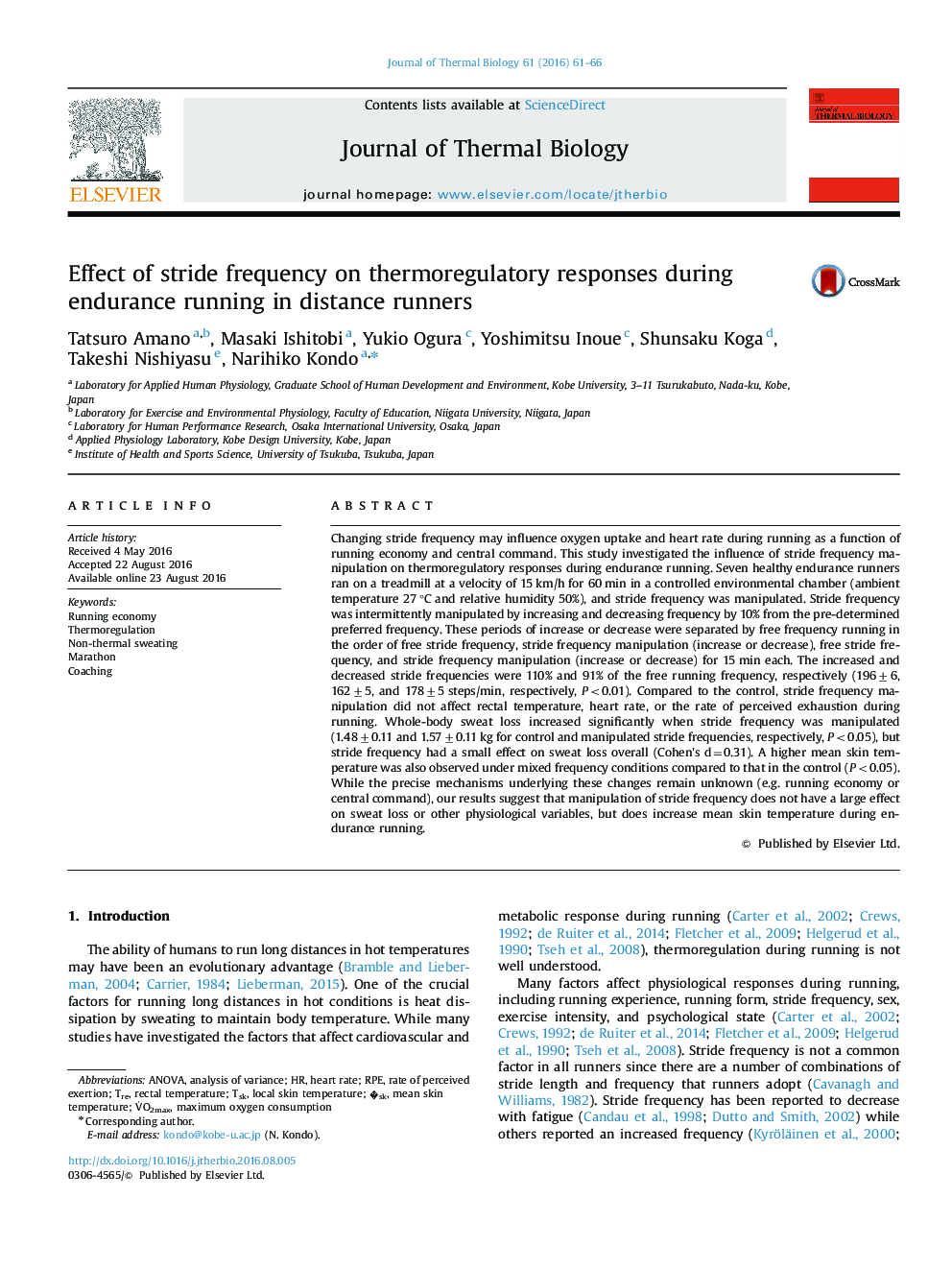| کد مقاله | کد نشریه | سال انتشار | مقاله انگلیسی | نسخه تمام متن |
|---|---|---|---|---|
| 2842645 | 1571085 | 2016 | 6 صفحه PDF | دانلود رایگان |
• Manipulation of stride frequency increased sweat loss during endurance treadmill running; however, the magnitude was small.
• The manipulation significantly increased mean skin temperature without affecting other physiological variables.
• Manipulation of stride frequency influence thermoregulatory response during endurance running.
Changing stride frequency may influence oxygen uptake and heart rate during running as a function of running economy and central command. This study investigated the influence of stride frequency manipulation on thermoregulatory responses during endurance running. Seven healthy endurance runners ran on a treadmill at a velocity of 15 km/h for 60 min in a controlled environmental chamber (ambient temperature 27 °C and relative humidity 50%), and stride frequency was manipulated. Stride frequency was intermittently manipulated by increasing and decreasing frequency by 10% from the pre-determined preferred frequency. These periods of increase or decrease were separated by free frequency running in the order of free stride frequency, stride frequency manipulation (increase or decrease), free stride frequency, and stride frequency manipulation (increase or decrease) for 15 min each. The increased and decreased stride frequencies were 110% and 91% of the free running frequency, respectively (196±6, 162±5, and 178±5 steps/min, respectively, P<0.01). Compared to the control, stride frequency manipulation did not affect rectal temperature, heart rate, or the rate of perceived exhaustion during running. Whole-body sweat loss increased significantly when stride frequency was manipulated (1.48±0.11 and 1.57±0.11 kg for control and manipulated stride frequencies, respectively, P<0.05), but stride frequency had a small effect on sweat loss overall (Cohen's d=0.31). A higher mean skin temperature was also observed under mixed frequency conditions compared to that in the control (P<0.05). While the precise mechanisms underlying these changes remain unknown (e.g. running economy or central command), our results suggest that manipulation of stride frequency does not have a large effect on sweat loss or other physiological variables, but does increase mean skin temperature during endurance running.
Journal: Journal of Thermal Biology - Volume 61, October 2016, Pages 61–66
